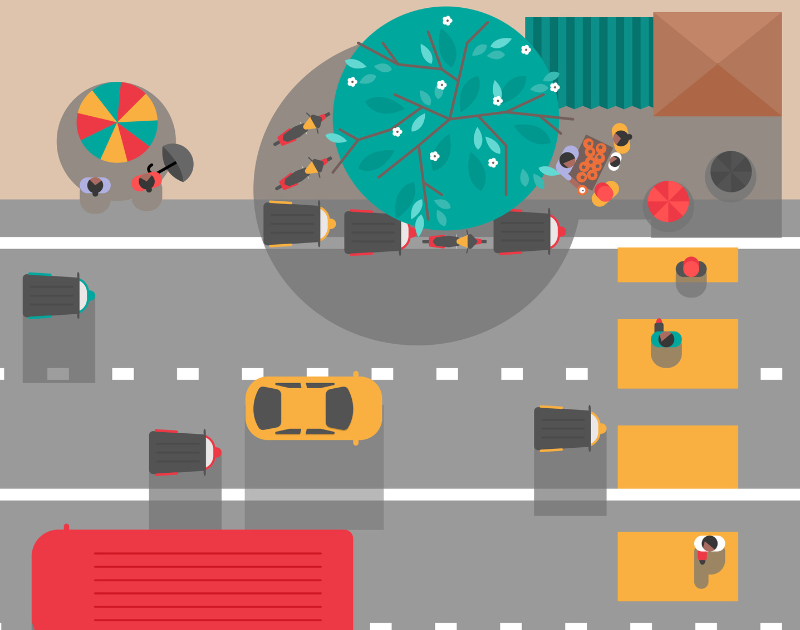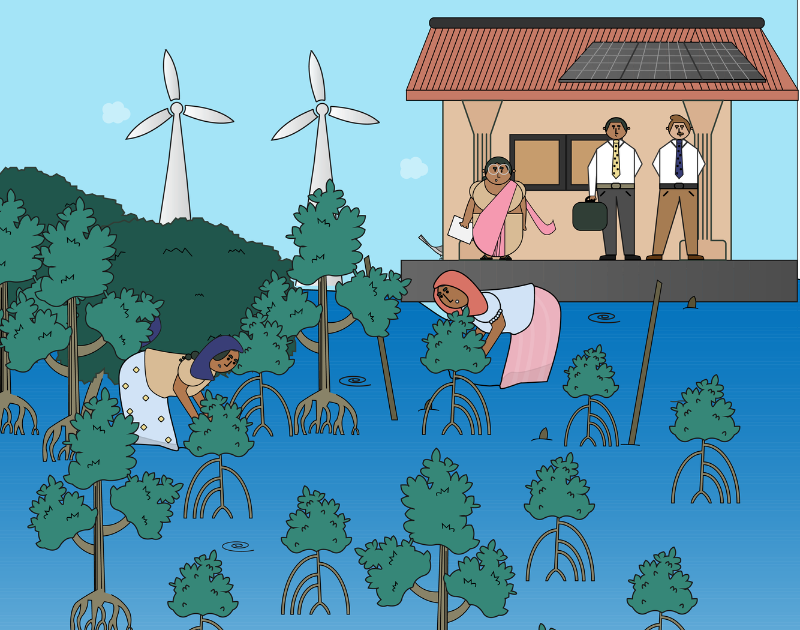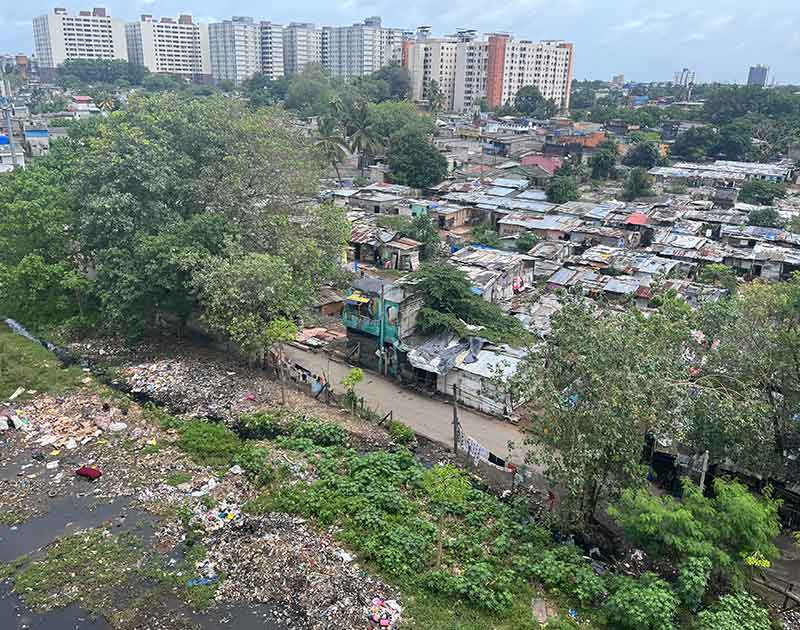
- Home
- Knowledge Insights
- Gendered Impacts of Heat Stress: Impacts and Policy Responses
Sri Lankan urban women face multifaceted impacts from heat stress. As the Asian Development Bank notes, women are disproportionately affected by extreme heat due to a variety of factors, including health risks, additional care burdens, and a lack of gender-targeted resource support. At Colombo Urban Lab, our research on heat stress in Colombo highlighted that female outdoor and informal workers face challenges accessing affordable, safe and clean public spaces (e.g. public bathrooms), which can increase their health risks and income earnings. Therefore, heat stress adaptation policies need to provide gender-specific targeted responses to better serve women.
How does heat stress disproportionately impact women?
Many informally employed women conduct economic activities in open or semi-open spaces such as verandas, corridors, and roadsides. Where there is no shade, workers might fall sick from prolonged periods in the sun. Their wares might also spoil faster due to heat exposure. A lack of clean infrastructure and services like safe and free public bathrooms can disincentivise women from drinking water, which helps mitigate heat stress. Women may also have to take on the burden of heat-adaptation (e.g. bringing their own shades to work). Heat could also directly affect their daily earnings if it reduces foot traffic in the area.
Almost two-thirds of the world’s home-based workers are in Asia and the Pacific, and more than half are women. Women living and working in informal settlements with heat absorbent infrastructure, such as tin roofs, are more likely to be exposed to extreme heat – above 40 degrees celsius – during the day. Energy poverty – the lack of affordable cooling technologies such as fans, air-conditioners or refrigerators- is also more likely to be felt by women.
Women working informally or at home are less likely to have support such as health insurance or heat adaptive Personal Protective Equipment (PPE), that could be provided by employers. This leaves them more vulnerable to the impacts of heat stress on their personal health and finances.
Heat stress amplifies women’s caregiving burden and worsens their time poverty. Women are often responsible for caring for elderly and young children, and both groups are highly susceptible to heat stress related problems, including heat strokes. For example, when schools are shut down during heatwaves, women face the additional burden of looking after young children often forgoing their income generating work. Consequently, women face an additional care burden for family and community members affected by heat-related illnesses and co-morbidities. Certain activities, such as cooking or water collection in areas without plumbing, leave women more exposed to heat stress. This is further worsened if their working conditions are already heat absorbent. Additional unpaid care work results in increased time poverty for women, leaving them unable to cool down their body during periods of heat stress – such as resting and staying well hydrated. Furthermore, it can also affect female employment outcomes, as women may be forced to leave the labour force due to their increased caregiving burdens at home.
Biological and health concerns also increase heat stress vulnerability. Pregnant and new mothers face heightened health risks due to rising temperatures. According to the ADB, each 1°C rise in maternal heat exposure is linked to a 27-42% increase in the risk of miscarriage or stillbirth. Women may be more prone to heat stress due to physiological factors, such as hormonal influences on body temperature, which are further compounded by age, poverty, caregiving roles, and limited access to resources. There is an increased likelihood of developing UTIs and health related problems (non-communicable diseases such as respiratory diseases, diabetes, hypertension, cardiovascular diseases, declining mental health, as well as other co-morbidities that can reduce the quality and length of life, particularly among vulnerable populations) amongst women as a result.
What can Sri Lanka learn from other countries?
Free drinking-water points in public spaces like bus stops, shaded rest stops, and chiller/rooftop water dispensers at markets, bus stops and street-vending clusters can mitigate heat stress for informal workers.
Increase access to public restrooms that are clean and safe for female workers to use. Organizations like India’s Self-Employed Women’s Association (SEWA) have collaborated with local authorities in states like Bihar to increase access to public infrastructure for female informal workers.
Provide low-cost adaptive gear such as wide umbrellas for vendors to help mitigate heat exposure, or gunny bags and sacks to create temporary “cool roof” shading for tin roofs.
Ensuring access to gender specific PPE that is designed with women’s needs (e.g. menstrual hygiene, modesty, pockets for cash/phone).
Shift peak outdoor work away from hottest hours, by providing flexible working-hour guidance for markets, construction helpers, and gig platforms (offering cash for reduced hours and paid rest breaks where possible).
When designing Heat Action Plans (HAPs), consultations with female-led community groups or organizations can help policymakers ensure that adaptation plans are gender-targeted. For example, given women’s additional vulnerability to heat stress, gender-responsive early warning systems & tailored education and awareness training could help reduce health related fatalities.
Use gender-disaggregated channels such as women’s collectives, mothers’ groups, market associations, and female community health workers to deliver early warning system messages.
In Gujarat, Surat city’s HAP identifies “cool centres” to maintain vulnerable patients (e.g. the elderly, new mothers and newborns) during heatwaves to minimise heat related illnesses. Moreover, new mothers are provided additional information to identify heat-related illnesses in newborns and connected with health officers for further support.
Providing cool drinking water to underserved settlement areas can help women stay hydrated without worrying about collecting water, while caring for family members.
Community cooling-and-care centres where women can bring children during extreme-heat hours so they can continue livelihood activities without exposing children to heat, or so women can rest safely when needed.
Micro-insurance programmes like Women’s Climate Shock Insurance, that are automatically triggered when temperatures exceed a certain threshold, can provide short term financial support for informal women workers by reducing the impact of lost wages due to the weather.


